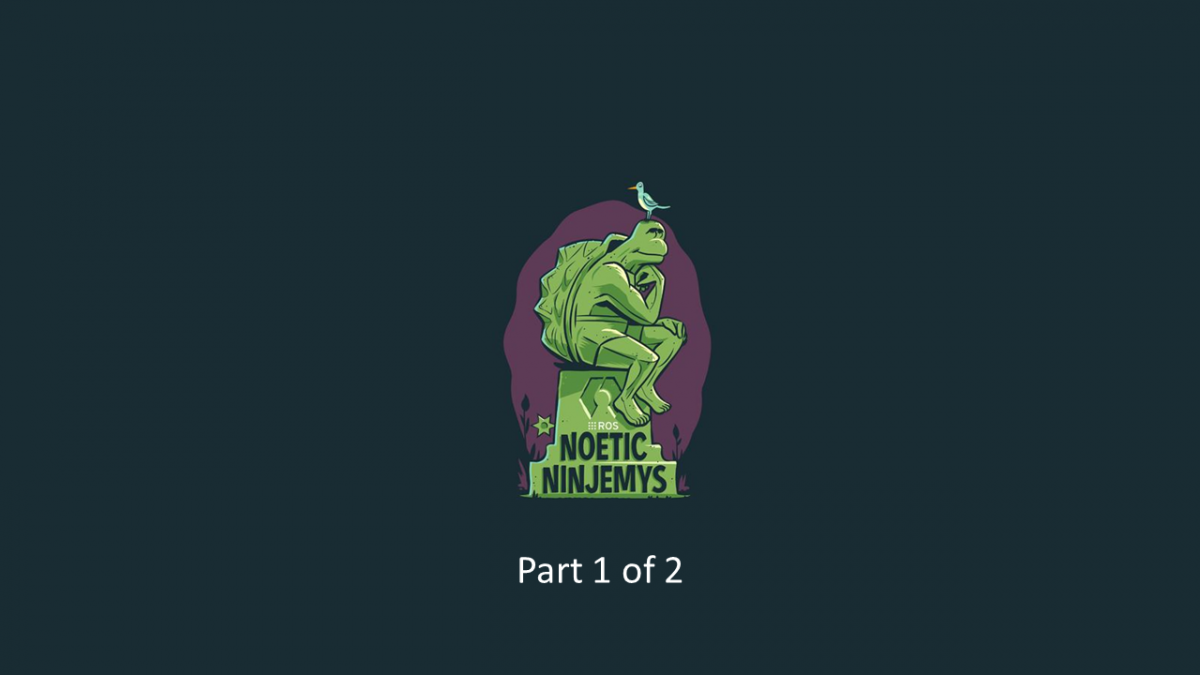In this tutorial, we will explore the basics of ROS Noetic Ninjemys (ROS Noetic), the latest distribution of ROS.
ROS has a steep learning curve. I remember when I first started learning ROS, my head was spinning. There was all this new vocabulary you have to learn: nodes, packages, subscribers, publishers, etc. It was like learning some obscure foreign language for the first time.
To get the most out of ROS, I recommend going through Part 1 and Part 2 of this tutorial. My advice to you is to not worry if everything seems complicated and doesn’t make sense. Don’t worry if you can’t understand how any of these abstract concepts connect to a real-world robot.
ROS is built in such a way that you need to work through the boring basics before you can use it to develop actual robotics projects. You have to walk before you learn how to run.
After you work through the basics of ROS, you’ll start applying those basics to actual robotics applications using ROS. It’s at that point that all that abstract stuff that you will learn below will come together and finally make sense.
If you start to build robots with ROS without learning the basics of ROS, you’ll get super confused. It would be like trying to go to a foreign country and trying to speak their language without ever having learned basic words and phrases.
ROS doesn’t allow you to skip steps in the learning process. You have to build your knowledge of the basics of ROS, brick by boring brick, in order to use it to build fun robots that solve real-world problems.
So be patient in the learning process, and I assure you that you’ll master ROS and will be building cool robots in no time.
Without further ado, let’s get started!
Prerequisites
- You have installed ROS Noetic.
- You understand how to create a simple “Hello World” program in C++.
- You understand the basics of Python.
- You understand the basics of Linux.
ROS Noetic Ninjemys Tutorial – Part 1 of 2
- How to Find the Path of a Package
- How to List the Files Inside a Package
- How to List All Installed Packages
- How to Get a List of All Publicly Available ROS Packages
- How to Change Your Current Working Directory
- How to Create a New Package
- How to Build a Package
- Common ROS Package Commands
- How to Create a Publisher Node
- How to Create a Subscriber Node
- How to Build a Node
- How to Run a Node
- How to Create Custom Messages
- How to Publish and Subscribe to Custom Messages
- How to Create a Service
- How to Create a Launch File
When you’ve finished the tutorials above, go on to Part 2.

